
Always have wings? Mother Nature begs to differ! A surprisingly varied group of animal species have evolved the ability to glide, parachute and even fly through the air with the greatest of ease. These 7 amazing wingless flying animals take to the sky like a fish out of water…and yes, one of them really IS a fish out of water.
1. Ballooning Spiders
Images via: Al Abbasi and Taken For Granted
Spiders can’t fly, a fact that certainly brings cheer to most of us. Don’t get too comfortable, however, as spiders worldwide have come up with an ingenious and effective manner of traveling long distances by air. It’s called “ballooning” and it’s pretty much what one might imagine: spiders exude silken draglines that catch the wind; the wind returns the favour by catching the spider and lifting it aloft over often appreciable distances.
Image via: BugBlog
While the vast majority of ballooning spiders are both very young and very small, adult Money Spiders (above) have been known to utilize this unusual method of relocation to, er, relocate. And you thought “money” falling from the sky was a GOOD thing! [More]
2. Flying Squid
Images via: The Blaze/AFP
Several species of squid including the Pacific Flying Squid (Todarodes pacificus) and the Neon Flying Squid (Ommastrephes bartramii) have been observed moving through the air, singly or in groups, at distances of as much as 30 meters or nearly 100 feet! Some have even landed on passing boats; unintentionally, of course.
Images via: BU
It’s thought that these squid take to the air for the same reasons Flying Fish do: it’s a stealthy and unexpected way to escape from non-flying, seaborne predators. So-called “flying squid” shoot out from the water using their siphons to expel water from their bodies - some have done this while in “flight”…natural jet propulsion as it were! In addition, scientists have observed these squid seemingly adjusting their mantle fins in mid-air to control their direction. [More here and here]
3. Flying Frogs
Images via: Giving Mirth, Neurotic Physiology and Monster Fishkeepers
Two families of tree frogs, the Old World Rhacophoridae and the New World Hylidae have independently evolved gliding techniques by adjusting their body morphology. These tree-dwelling frogs sport large but thin membranes between the toes of all four feet that are used to cushion the air. Using their webby wings in conjunction with flattening their bodies, the frogs can glide short distances - quite useful when the nearest tree is more than a hop, skip and jump away.
Image via: Fine Art America
One of the most accomplished flying frogs is the Chinese Gliding Frog (Polypedates dennysi, above) [more here], which is able to adjust the curve of its flight path during the course of a glide. This amphibian has managed to strike a balance between being able to glide when necessary and retaining the ability to hop on land and swim in water. Natural multitasking at its finest! [More]
4. Flying Fish
Images via: BBC, Loyola University and Blennywatcher
Flying Fish [more here] are neither an evolutionary accident nor an isolated oddity; in fact there are more than 50 species of flying fish, all of which belong to the family Exocoetidae. Flying fish have evolved larger and longer pectoral fins over millions of years, leading to the conclusion that adding the air as an escape route bestows advantages to these creatures.
Image via: Sustainable Sushi
Most species of flying fish utilize a single pair of enlarged fins to facilitate their airborne glides, some of which can last for up to 45 seconds and extend for 30 to 50 meters (up to 165 feet). Some species exhibit lengthened rear fins as well - while it may or may not improve their gliding technique, it definitely adds to their bizarre appearance!
5. Flying Lizards
Images via: outdoors2magic, Mudfooted and Mother Nature Network
Flying Lizards: quirky New Wave band or airborne reptiles? Both, actually, but we’re here to discuss the latter. As many as 28 species of Draco Lizards [see also Draco volans] live in forested areas of Southeast Asia, the Indian subcontinent and Sri Lanka. More gliders than flyers, lizards of this remarkable genus are able to unfold webbed extensions of their side ribs when they’re ready to leap through the air. Their technique is surprisingly effective, allowing them to glide as far as 60 meters (195 feet) while only losing about 10 meters (33 feet) of altitude in transit.
Images via: Learn With Technology and Aqualand Fact Sheets
Several species of Gecko are also able to glide short distances. To facilitate these leaps into the wild blue yonder, these lizards have evolved fin-like flaps of skin that extend laterally from their heads, sides, legs and feet. No word on whether an unsuccessful glide or two affects their auto insurance premiums. [Related Post]
6. Flying Snakes
Images via: Animal World and National Geographic
Five species of snake from the genus Chrysopelea are considered to be “flying snakes” and they can be found in parts of Southeast Asia, southernmost China, India and Sri Lanka. Ranging in length up to 4 feet, the best “flyer” of the bunch is the Paradise Tree Snake (Chrysopelea paradisi) which can grow up to 3 feet in length and glide up to 100 meters (330 feet).
Images via: National Geographic and Venomland
Flying snakes are able to flatten their bodies so that in cross section they take on the rough appearance of a Frisbee flying disc. Like the Frisbee, these snakes create an area of high air pressure beneath their bodies that provides lift and extends their glides accordingly. On occasion, these snakes have been seen to “slither” through the air and effect changes in their direction.
7. Flying Squirrels
Images via: The DenDrey at PhantomFarm and DS World’s Lands
There are 44 different species of Flying Squirrel with varieties found in nearly every corner of the globe. Unlike bats, flying squirrels are not true flyers but by adjusting the tautness of their wrist-to-ankle wing flaps, are able to create lift and perform astonishingly accurate aerial manoeuvrings. The blue-eyed, Red and White Giant Flying Squirrel (Petaurista alborufus, above), native to China and Taiwan, is the largest species of flying squirrel and boasts an exceptionally impressive set of wing flaps.
Image via: Eco Wildlife Solutions LLC
While not quite as aerially proficient as its cartoon representation, Rocky the Flying Squirrel, actual flying squirrels display a remarkable sense of skill and poise when moving through the air. They make affectionate but challenging pets, and are not afraid to display their techniques indoors or out - owners beware. All things considered, these amazing creatures have achieved a level of adeptness in the air that belies their mainly earthbound lifestyles, without sacrificing their natural survival skills…and to that, we should lift our hats.
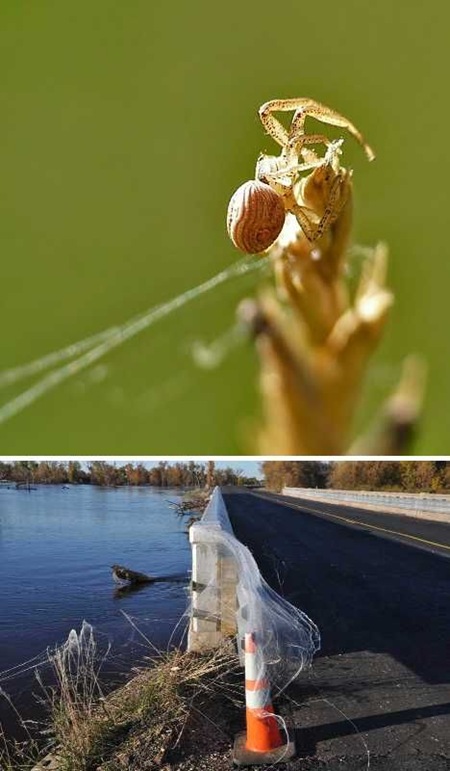
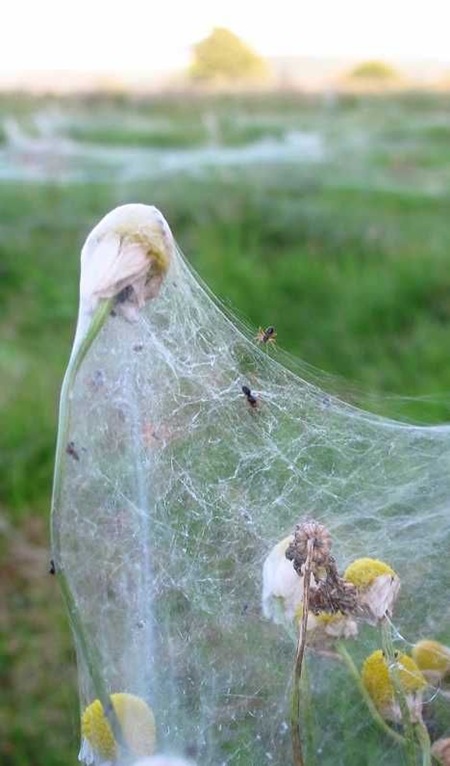
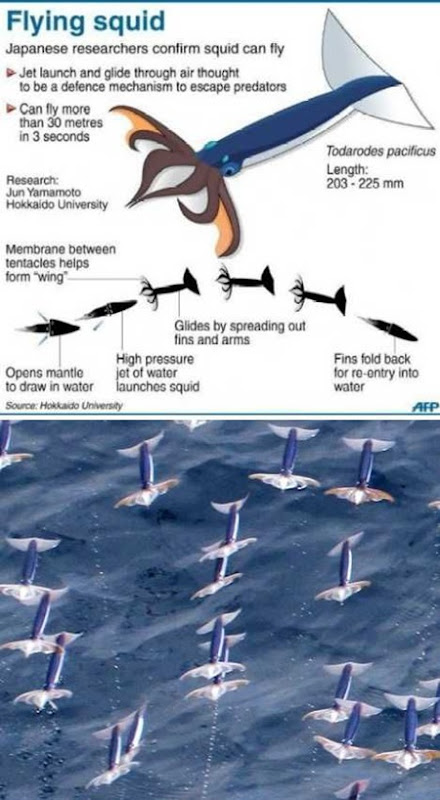


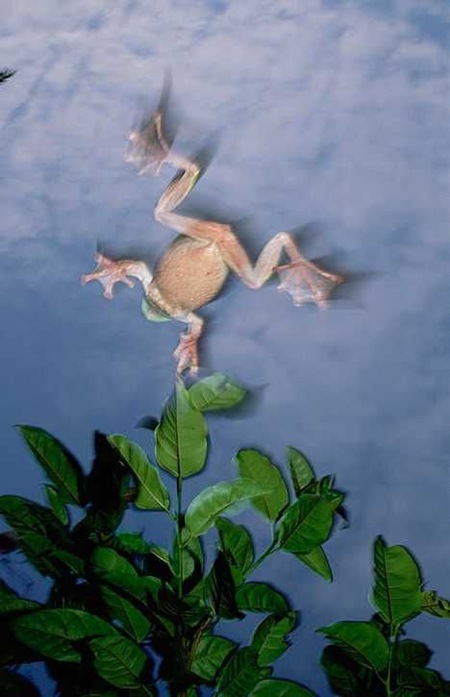
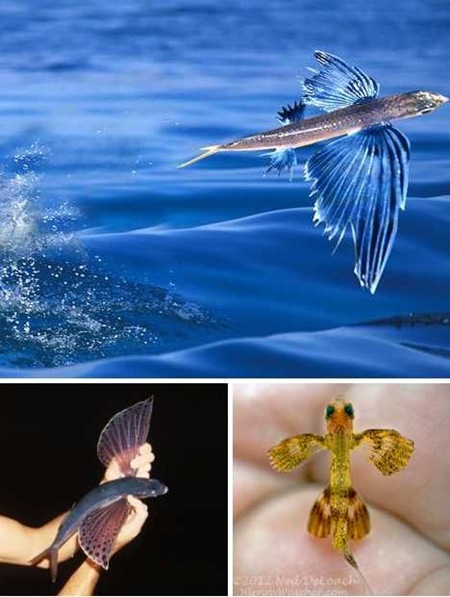

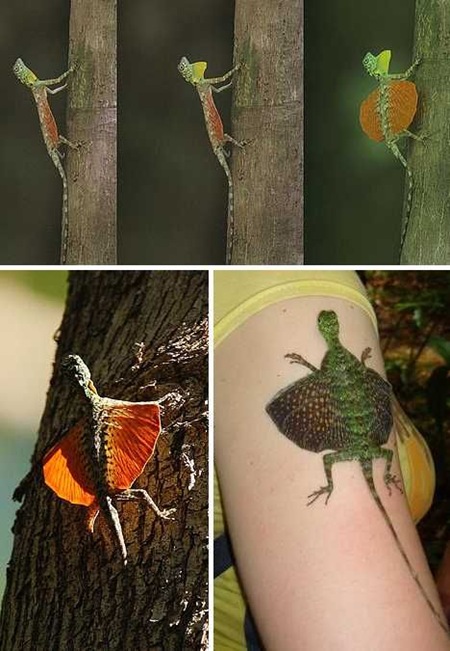

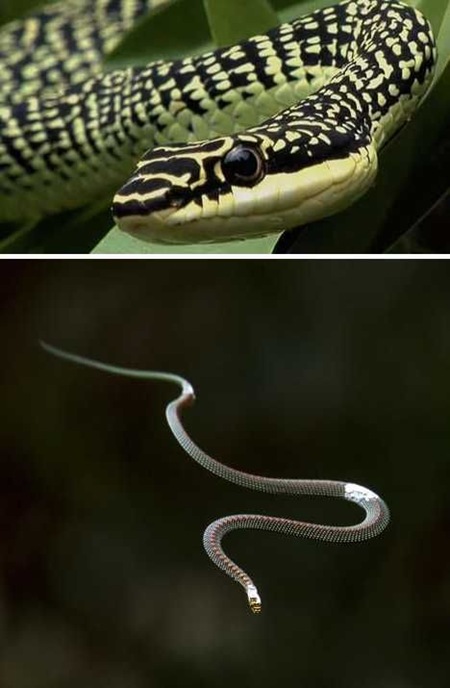
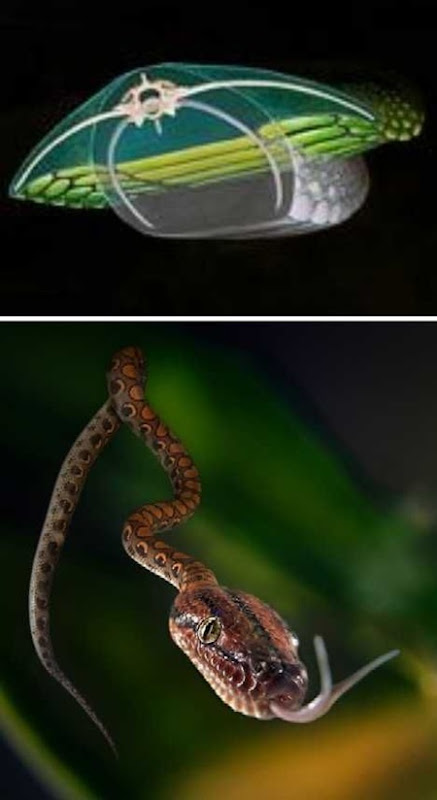
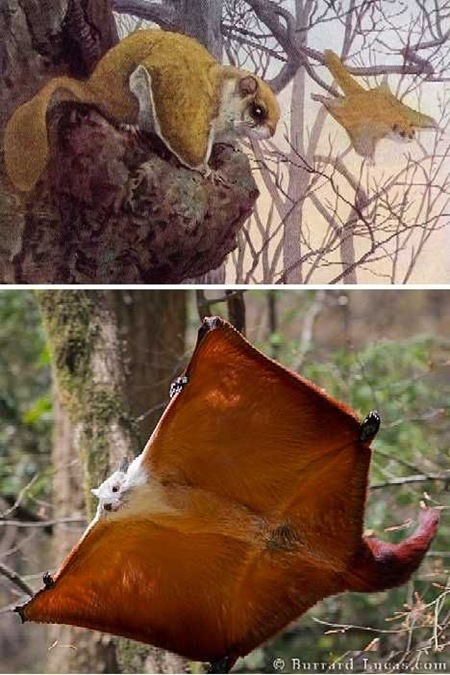

No comments:
Post a Comment
Please adhere to proper blog etiquette when posting your comments. This blog owner will exercise his absolution discretion in allowing or rejecting any comments that are deemed seditious, defamatory, libelous, racist, vulgar, insulting, and other remarks that exhibit similar characteristics. If you insist on using anonymous comments, please write your name or other IDs at the end of your message.